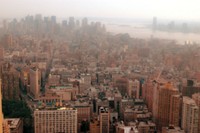Advertisement
Grab your lab coat. Let's get started
Welcome!
Welcome!
Create an account below to get 6 C&EN articles per month, receive newsletters and more - all free.
It seems this is your first time logging in online. Please enter the following information to continue.
As an ACS member you automatically get access to this site. All we need is few more details to create your reading experience.
Not you? Sign in with a different account.
Not you? Sign in with a different account.
ERROR 1
ERROR 1
ERROR 2
ERROR 2
ERROR 2
ERROR 2
ERROR 2
Password and Confirm password must match.
If you have an ACS member number, please enter it here so we can link this account to your membership. (optional)
ERROR 2
ACS values your privacy. By submitting your information, you are gaining access to C&EN and subscribing to our weekly newsletter. We use the information you provide to make your reading experience better, and we will never sell your data to third party members.
Environment
New EPA Limit On Ground-Level Ozone Draws Mixed Response
Air Pollution: Chemical industry opposes rule, health advocates sought more protective level
by Jeff Johnson
October 8, 2015
| A version of this story appeared in
Volume 93, Issue 40

Congress is taking a critical look at a new federal air quality standard that the chemical industry says will put expansion investments at risk but that health advocates say doesn’t offer enough protection.
At issue is the Environmental Protection Agency’s new air pollution limit for ground-level ozone, which is created when hydrocarbons and nitrogen oxides react in the presence of sunlight. The new standard of 70 ppb, issued on Oct. 1, is slightly lower than the previous cap of 75 ppb. The agency had considered 65 ppb in a draft proposal but later backed off that number.
Ozone, a powerful oxidant, irritates lungs and bronchial airways, damaging tissue and leading to wheezing and shortness of breath. It aggravates lung diseases. If the level of ozone in an area exceeds the standard, air regulators have authority to require NOx and hydrocarbons emissions reductions from vehicles, industrial facilities, and electric utilities.
The American Chemistry Council, a trade association, says the standard “puts $10 billion in chemical industry investment at risk.” New facilities, plant expansions, and factory restarts will remain in limbo while EPA determines how these plants, which may emit hydrocarbons and nitrogen oxides, can obtain air pollution permits necessary for construction and operation, ACC explains.
Other industry groups turned to Congress in an effort to block implementation of the standard. Some lawmakers are responding. The House Science, Space & Technology Committee, whose leaders are critical of the new rule, are planning a hearing to scrutinize it and call witnesses who oppose it.
The rule has supporters too. Although health advocacy organizations sought an ozone limit of 60 ppb, the new limit “offers significantly greater protection than the previous, outdated standard,” the American Lung Association says.
EPA considered lower levels to meet a recommendation from its science advisers of 60 to 70 ppb. In the end, EPA Administrator Gina McCarthy picked the weakest level within the science advisers’ range. She says thousands of new studies led her to believe 72 ppb was a safe level for healthy adults, and she chose 70 ppb to provide a protective margin for children and those with compromised lungs.



Join the conversation
Contact the reporter
Submit a Letter to the Editor for publication
Engage with us on Twitter